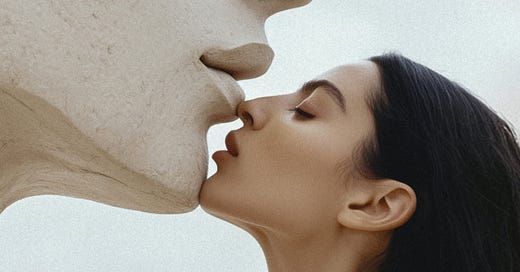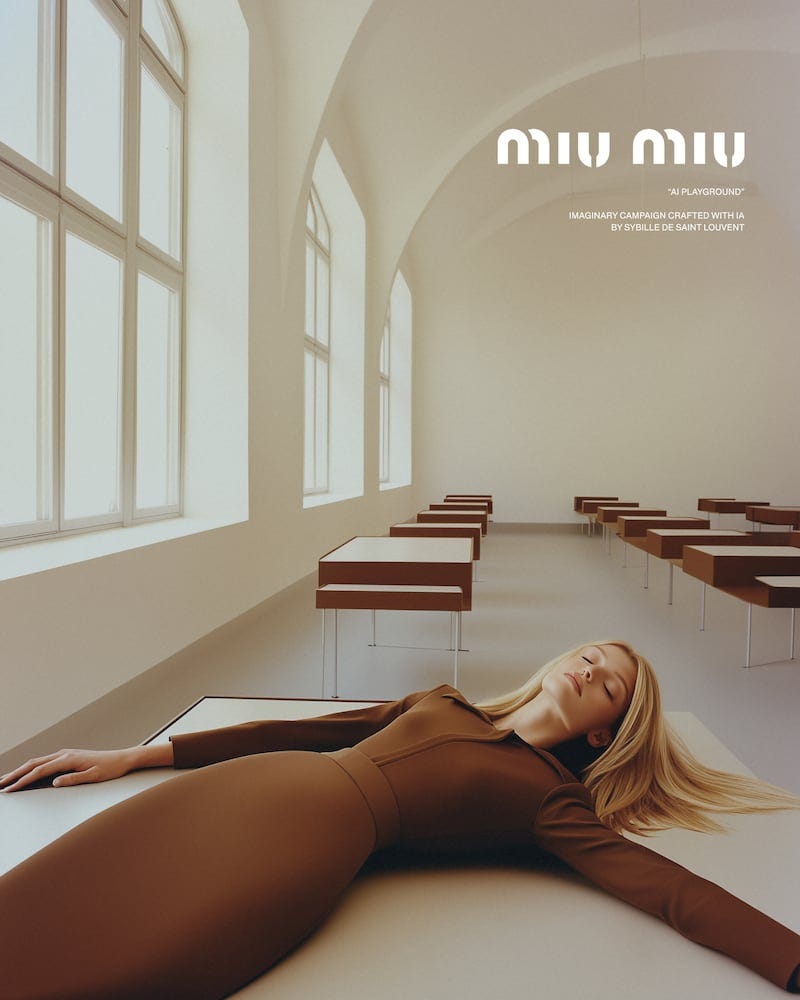Reimagining Luxury: The Role of AI in Creative Strategy
As AI-generated images are becoming more efficient, what will be the future of Luxury Fashion Campaigns?
As AI is increasingly becoming a part of our daily lives, raise your hand if ChatGPT is becoming your best friend, and raise it higher if you feel guilty wondering how you ever lived without it.
Until a few months ago, we might have argued that AI would never be able to perfectly imitate real photography or produce authentic reproductions of images. Now the situation has flipped. As the quality of AI-generated images has improved significantly, it is now time for artists to experiment and test how this new format of work could suit the luxury market.
The works of Sybille de Saint-Louvent, an independent creative director, recently became viral as she imagines these fake AI-generated campaigns for luxury fashion brands. She has already been collaborating with brands ranging from Hermès, Gucci, Prada, Jil Sander and Toteme among others. Her works might be opening the doors to a whole new world of possibilities in terms of image creation for fashion campaigns.
One might argue that AI may feel less ‘human’ or ‘creative’ when, in fact, this tool cannot and won’t ever work without proper research and concept-building behind it. The steps of creating an image using AI are the same as when you’re working on a real set, she explains.
She said she writes highly detailed prompts because she has a precise idea of what she wants to see. If you just enter something like “beautiful girl standing on the street of a clean city,” you get a cliché of a tall blonde, a result of the way AI can easily reproduce biases if the user isn’t careful.
She manually edits images as well to make small modifications and for the “chromatic perspective.” Her colour palette leans toward neutrals and soft, tonal shades.
From the BOF article ‘The Fake Fashion Campaigns That Show AI’s Future in Marketing’
The biggest advantage of using AI in fashion is cost reduction, as it eliminates a lot of roles normally involved in a fashion campaign. But this is also its downside: it cuts jobs and loses the human touch that makes fashion content feel unique and special.
A New Era of Digital Innovations
A few months ago, H&M produced the first campaign with 30 models ‘Digital Twins’, AI-generated. Meaning that models gave their consent to use their image, avatar let’s say, to the brand, without the need for them to be physically there. While this new initiative gives the possibility for the models to be in two different places at the same time, it also raises significant ethical, professional, and creative concerns.
As you can imagine, this could touch various professionals involved in traditional photoshoots, including makeup artists, hairstylists, photographers, and stylists.
From an ethical point of view, concerns arise around the authenticity and control over models’ likenesses, raising questions regarding consent, compensation, intellectual property rights, and potential misuse of these digital identities. Brands must address transparency about the use of digital representations, ensuring models retain agency over their virtual personas.
As more labels, from Levi's to Hugo Boss, start embracing AI-generated marketing content, the fashion industry may split into two distinct groups: those embracing tech-driven innovations and those trying to hold on to the traditional way of working - but to be honest, no brand will resist the temptation to use this new tool to save time and costs.
Maybe this shift could also redefine the notion of luxury itself, with fully human-made campaigns emerging as the new benchmark of true exclusivity and creative authenticity.
On the other hand, this innovation will open new opportunities for a new wave of digital creatives who use artificial intelligence in their works. But, it is imperative that luxury brands first understand how to use AI-generated content without compromising their connection with the consumer.
Will AI be part of the Luxury dream?
‘Luxury’ can have a very different connotation to each one of us.
When referring to a brand, luxury means, among other things, excellence in craftsmanship, culture - driven and not easily accessible to everybody - but wanted and desired by most. Luxury is something you perceive as soon as you enter a room, and you suddenly have a desire to be part of a universe that feels exclusive and unique at the same time.
Just like when the internet arrived, AI is polarising the industry. Back in 2004, Burberry was one of the first to take the risk, fully digitalizing its collections and launching e-commerce while most luxury brands were still resisting the idea. The fear back then? That going online would take away exclusivity and make luxury feel too accessible, too open.
Sound familiar?
Today, the same concern applies to AI when applied to Marketing: it might dilute their reputation, the sense of intentionality, and the emotional depth that defines true luxury. But just like the internet, AI won’t disappear. The question is whether brands will use it to elevate their identity - or lose it in the process.
- Artists who have reimagined the concept of digital content for Luxury Brands -
The artist Annie Choi (@anchoponcho) has been creating animated campaigns without the use of AI, and it shows how animations can suit multiple brands, creating different universes and elevating their contents.
These are productions that AI will hardly ever compete with, as the level of talent and imagination is exceptionally high, reminding us of the distinguished drive that defines us as human beings.
I’m not surprised that so many brands have worked with this artist in the past year, ranging from Loewe, Burberry, Hermes, Dior, Helmut Lang, and others.
Another artist that has collaborated with luxury houses to diversify their advertisements on socials is Huw Messie, combining her skills in machine embroidery with videography, VFX, and animations, giving life to an eye-catching vision that perfectly aligns with the brand’s identity.
Like this Burberry Advertisement:
- Forecast for the future of Marketing -
AI isn’t going anywhere. Whether you’re a marketer, designer, or creative director, it’s becoming part of the process of how we think, solve problems, create, and communicate. The real question now is: can AI-generated images truly connect? Can they move people the way a powerful campaign shot by a real photographer can?
Because if there’s one thing luxury has never been about, it’s speed or convenience. It’s about emotion - that intangible feeling you get when you look at something and feel a sense of desire, intimacy, or awe. And that kind of reaction still needs a human behind it.
That’s why AI should be seen as a creative tool - one that expands your possibilities rather than replaces your instincts. It can open new doors if there’s a strong vision guiding it. But if there isn’t, you can feel it. The image may be flawless, but it’s empty.
For the luxury Maisons, the real challenge will be about finding the balance. Using AI where it makes sense, without compromising on what makes them who they are.
Because in the end, it’s not about man Vs machine. It’s about making sure that what’s human - the idea, the emotion, the intention - always comes first. Even if the image is generated, the desire behind it has to be real.
If you liked it, please share it :)
If you’re not a subscriber yet, sign up here !










